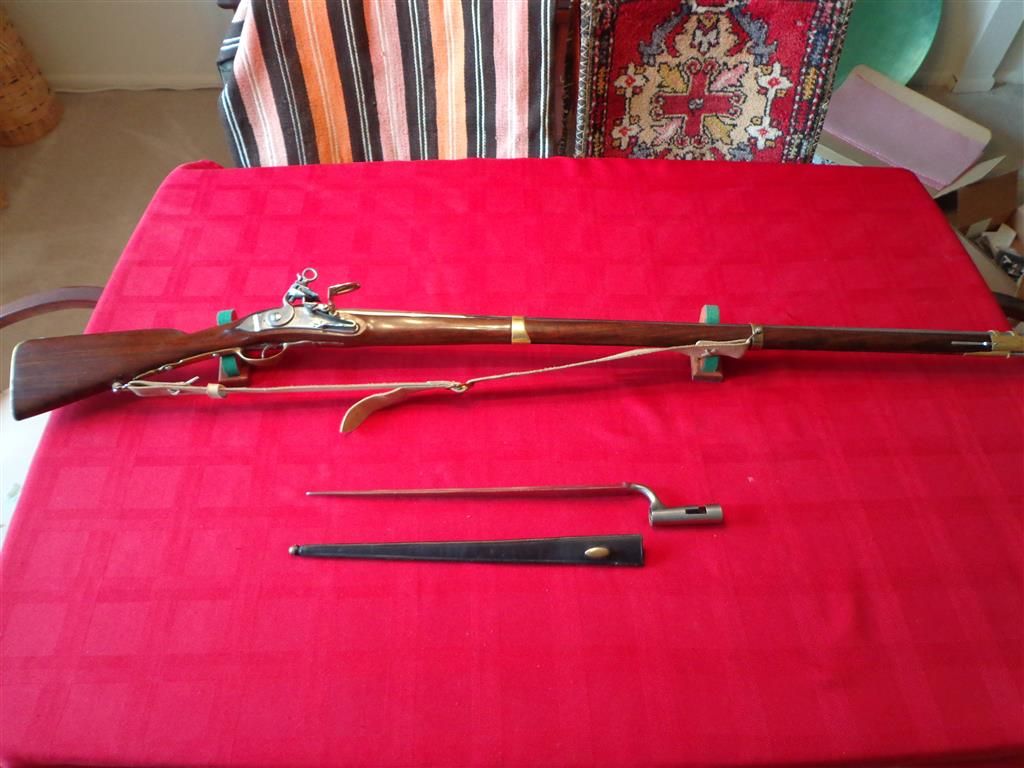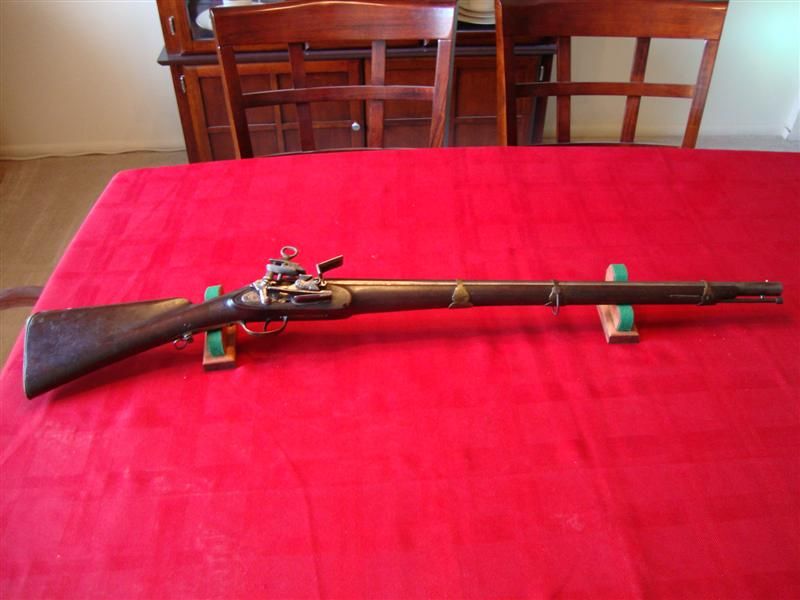The 1757 Spanish Musket was probably one of the finest firearms of the 18th century military. Incorporating several features that increased durability, as well as reducing cost of production.
Similar to the French musket, the Spanish 1757 used barrel bands, but the Spaniards used brass bands. Easier and cheaper to produce, while at the same time allowing for a more thorough upkeep away from an armory setting. In fact all of the exterior hardware was brass, reducing cost and easing production compared to the French muskets in steel and the British Dublin Castle LLP musket.
The Spanish lock had a cock with a very wide jaw, providing better hold on the flint, AND had a wide ring atop the jaw screw, simplifying tightening and untightening the flint. The Spanish frizzen was grooved lengthwise, which ensured over time due to wear that portions of fresh steel were being impacted by the flint, and the grooves reduced friction which then gave the flint (or chert, or even a piece of quartz) more velocity against the steel at the end of the impact increasing odds of a good spark. While not absolute, such a design does have a good chance of increasing flint life..., a good feature for an infantry private in combat or posted at a remote place around the globe.
The caliber was .69, which like the French gave excellent muzzle velocity while reducing the lead requirement (compared to British, Dutch, and Germanic muskets of the period).
Alas, Pedersoli doesn't produce the Spanish musket these day, and theirs had some flaws.
Middlesex Village Trading Company does offer them from time to time, but I don't know if they have the important grooved frizzen feature. Parts are also available from the
The Rifle Shoppe, Inc.
LD








